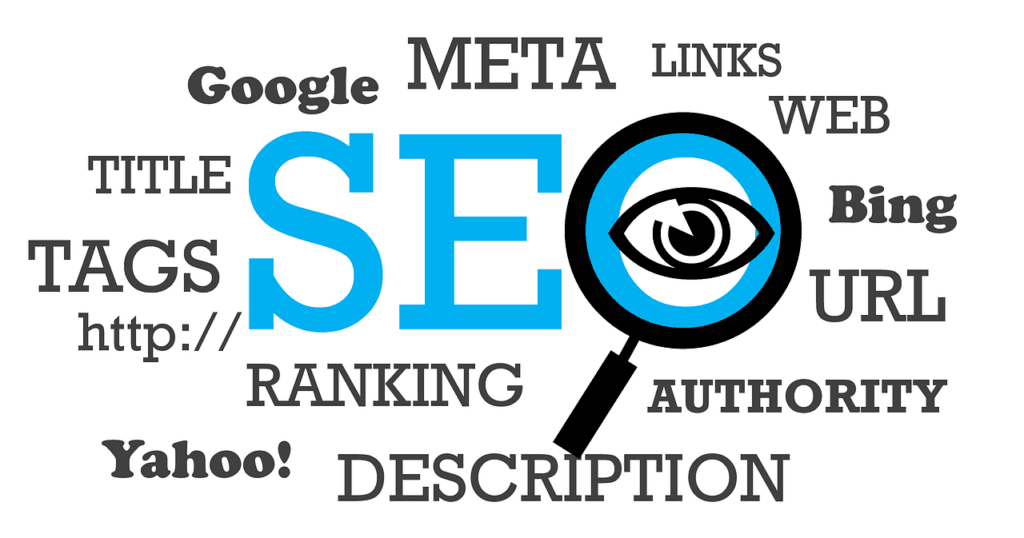In the digital age, where content is the king, visual elements reign supreme in their ability to communicate complex data succinctly and engagingly. Visual content such as infographics, charts, and graphs have made a significant footprint in the content marketing landscape, known for their efficacy to capture attention, convey information, and enhance user engagement. But beyond these obvious advantages, there lies a less traversed path where visual content intersects profoundly with SEO, yielding benefits that are both tangible and extensive.
The Visual Content Phenomenon
The Rise of Visual Content
Visual content isn’t a modern invention but its integration into digital marketing and SEO is profoundly contemporary. In the sea of text-based content, visual elements emerge as islands of engagement – they are not just viewed but absorbed, not just seen but experienced.
The SEO Connection
SEO, often perceived in the technical lenses of keywords and backlinks, finds a companion in visual content. Search engines are evolving, recognizing and rewarding content that enhances user experience, and herein, visual content plays a quintessential role.
Infographics and SEO
A Visual Symphony of Data
Infographics, a harmonious blend of data and design, are not just eye-catching but are repositories of information. In the realm of SEO, they are recognized for their ability to communicate complex data visually, enhancing comprehension, and engagement.
Shareability Factor
The visual appeal of infographics amplifies their shareability. Each share, a silent yet significant endorsement, generates backlinks and social signals that contribute to improved SEO rankings.
Charts and SEO
Simplifying Complexity
Charts translate numerical data into visual narratives, simplifying complex data sets into understandable visual formats. This ease of comprehension reduces bounce rates and increases dwell time, two pivotal metrics that impact SEO positively.
User Engagement
The interactive charts engage users, prompting them to explore data points deeply. This increased interaction is mirrored in enhanced user engagement metrics, a facet that directly influences SEO.
Graphs and SEO
Visual Data Exploration
Graphs offer users a visual avenue to explore data. The visual interaction, characterized by increased time spent on page and enhanced user engagement, sends positive signals to search engines, contributing to improved SEO performance.
Accessibility and Inclusion
Graphs make data accessible, breaking down barriers of comprehension and offering inclusive content experiences. This inclusivity and accessibility is recognized and rewarded by search engines, aligning with the broader goals of offering optimal user experiences.
Optimizing Infographics for SEO
Keyword Integration
Infographics, though visual, need to be discoverable. Integrating targeted keywords within the titles, descriptions, and alt texts of infographics ensures they are indexed and ranked appropriately by search engines. This process involves meticulous keyword research to identify terms that align with the infographic’s content and are frequently searched by users.
Mobile Responsiveness
With the surge in mobile device usage, ensuring infographics are mobile-friendly is paramount. This entails designing infographics that retain visual integrity and readability across diverse screen sizes, ensuring that the user experience remains uncompromised and SEO benefits are maximized.
Leveraging Charts for SEO
Interactive Elements
Charts with interactive elements not only enhance user engagement but contribute to SEO. Implementing features that allow users to manipulate and explore data ensures users spend more time on the page. This increased dwell time is a positive signal to search engines, indicative of the content’s value.
Metadata Optimization
Like any other content type, charts benefit from metadata optimization. Ensuring that titles, descriptions, and alt texts are infused with targeted keywords and descriptive phrases enhances the discoverability and indexation of charts by search engines.
Enhancing SEO with Graphs
Data Accuracy and Relevance
Ensuring that the data represented in graphs is accurate and relevant is foundational. Search engines are becoming adept at evaluating the quality of content, including data visualizations. Accurate, up-to-date data ensures that graphs contribute positively to the overall SEO score of the webpage.
User Experience Optimization
The design and layout of graphs should be optimized for user experience. This includes ensuring readability, ease of navigation, and visual appeal. A positive user experience correlates with enhanced SEO performance, as search engines prioritize content that offers value and satisfaction to users.
Future Trends in Visual Content SEO
AI-Driven Customization
Artificial Intelligence (AI) is transforming how visual content like infographics, charts, and graphs are created and consumed. AI-driven customization entails the real-time adaptation of visual content based on user behavior and preferences. It ensures that every piece of visual content delivered is tailored to the individual user’s interests and needs, enhancing engagement and SEO performance simultaneously.
VR and AR Integration
Virtual Reality (VR) and Augmented Reality (AR) are stepping stones towards immersive visual experiences. Infographics, charts, and graphs won’t just be viewed but experienced in a 3D interactive environment. These technologies enhance user engagement drastically, and the immersive interaction significantly boosts SEO metrics like dwell time and user satisfaction.
Chapter Nine: Enhancing Engagement with Animated Visuals
Animated Infographics
The evolution of static infographics to animated versions is on the horizon. Animated infographics engage users with moving elements and storytelling, making data consumption more engaging and entertaining. The increased user interaction and engagement will send positive signals to search engines, bolstering SEO efforts.
Dynamic Data Representation
Dynamic data representation with real-time data updating is becoming crucial. Graphs and charts that update in real-time ensure the content remains relevant and accurate, enhancing user trust and engagement. This dynamic nature contributes to a positive user experience, a key metric influencing SEO rankings.
Chapter Ten: Accessibility and Inclusivity in Visual Content
Voice Integration
As voice search becomes prominent, integrating voice with visual content will ensure inclusivity. Users will interact with infographics, charts, and graphs using voice commands, making content accessible to a broader audience. This increased accessibility will cater to a more diverse user base, influencing SEO positively.
Multi-language Support
Global audience engagement is pivotal. Multi-language support in visual content ensures that infographics, charts, and graphs are accessible and understandable to a global audience. This global reach and engagement will enhance the international SEO footprint.
Practical Strategies for Future-Ready Visual Content
Harnessing AI
AI’s transformative impact in customizing visual content can be harnessed through tools and platforms infused with machine learning algorithms. These tools facilitate the real-time analysis of user behavior, enabling content creators to deliver personalized visual experiences. It’s about merging data with design, ensuring every infographic, chart, or graph is a dynamic entity, evolving in real-time to resonate with individual user preferences.
Immersive Experiences with VR and AR
Creating VR and AR-enabled visual content requires an intersection of creativity, technology, and user experience design. Content creators need to focus on tools and platforms that allow the integration of VR and AR elements without complex coding. The focus is on creating visual content that transcends traditional boundaries, offering users immersive experiences that are not just engaging but are recognized and rewarded by search engines.
Chapter Twelve: Animated Visuals and Dynamic Data
Utilizing Animation Tools
Content creators need to equip themselves with animation tools that are intuitive, offering a blend of customization and ease. Animated infographics and dynamic data representations aren’t about complexity but about engaging storytelling. The narrative of data, when infused with animation, becomes a living story, captivating users and enhancing SEO metrics.
Real-Time Data Integration
Integrating real-time data into visual content requires a focus on data sources and APIs that are reliable and up-to-date. It’s about ensuring that every piece of data represented visually is current, enhancing the content’s relevance and trustworthiness. Tools that facilitate real-time data integration while ensuring the visual integrity and appeal of the content are pivotal.
Chapter Thirteen: Enhancing Accessibility
Voice and Language Integration
Voice integration can be achieved through platforms that support voice commands and interactions. It’s about ensuring that visual content is not just seen but heard and interacted with, through voice. Multi-language support is facilitated by translation tools and platforms that ensure accuracy while retaining the visual appeal and integrity of the content.
User Experience Focus
Every element of future-ready visual content is rooted in enhancing the user experience. It’s not just about the visual appeal but about interaction, accessibility, and engagement. Content creators need to focus on user experience design principles, ensuring that every piece of visual content, be it an infographic, chart, or graph, is crafted with the user at the center.

Related: Check out our free SEO suite

Mobile Optimization in Visual Content SEO
Adaptive Designs
As mobile devices continue to dominate user internet access, adaptive designs for visual content have become essential. Infographics, charts, and graphs need to be visually appealing and informative on screens of all sizes. This means focusing on responsive designs that adapt to different screen dimensions while maintaining content integrity and quality.
Speed and Performance
The performance of visual content on mobile devices is a critical SEO factor. This encompasses load times and interactive elements’ responsiveness. Content creators must optimize visual content to ensure rapid loading and seamless interaction on mobile devices, contributing to enhanced user experience and SEO rankings.
User Interaction and Feedback
Engaging Elements
Adding elements that users can interact with, such as clickable points on infographics or draggable elements on graphs, enhances user engagement. These interactive facets contribute to increased time on page and reduced bounce rates, bolstering SEO efforts.
Feedback Integration
Allowing users to give feedback on visual content can provide insights for improvement and enhancement. Positive user feedback can also be leveraged as social proof, contributing to the content’s credibility and trustworthiness, factors that are integral to SEO performance.
Conclusion
As we encapsulate our extensive exploration into “Visual Content SEO: Infographics, Charts, and Graphs,” a radiant tapestry of insights, strategies, and future trajectories unveils itself, offering content creators a roadmap into the intricacies of visual content in the SEO landscape.
From the foundational narratives of infographics, charts, and graphs as not just visual engagements but SEO catalysts, to the futuristic contours where AI, VR, and AR redefine content interaction, each revelation is a stepping stone towards strategic visual content creation that resonates with both users and search engines.
READ NEXT:
- Let’s Discuss How We Can Help Improve Your Business
- Trust the Experts: SEO for Financial Advisers
- Keyword Research for Startup Webinars: Driving Registrations
- How to use eSputnik: An Explainer
- How to Create a Social Media Marketing Plan: The Complete Guide




















Comments are closed.